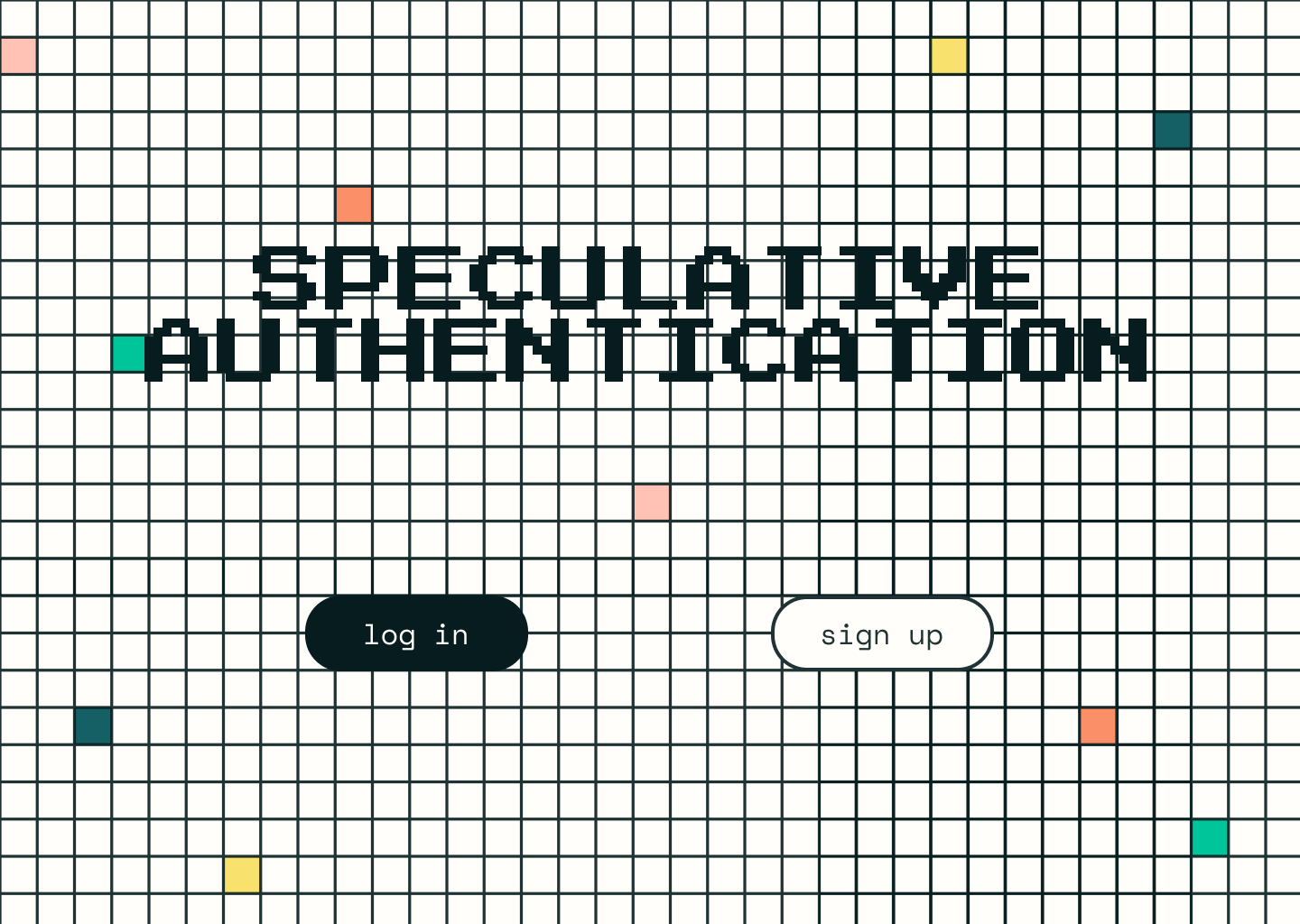speculative authentication
2020
After stumbling across this website documenting the work of a group of artists, designers, and technologists creating speculative authentication methods, I became intrigued. Although they used machine learning in their implementations, I was curious whether I could implement a method that doesn't use machine learning, but still bypasses the traditional word password model.
After playing with color as a password, I changed my approach to using pixel art as a speculative authentication method. Still very much a work in progress (particularly around encryption/hashing/salting/security), but an intriguing exercise in reimagining how we authenticate ourselves online and wondering the possible "what ifs" around it.
 Landing page for the speculative authentication project
Landing page for the speculative authentication project

As a designer + artist, I would definitely describe myself as visually inclined. I thought that an authentication method that focused on a visual implementation could be useful in more playful applications, such as a game or other interactive application.


